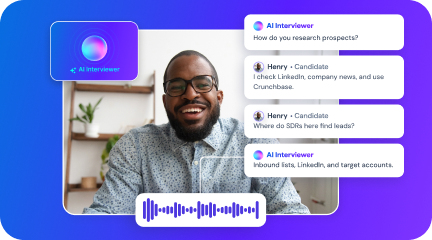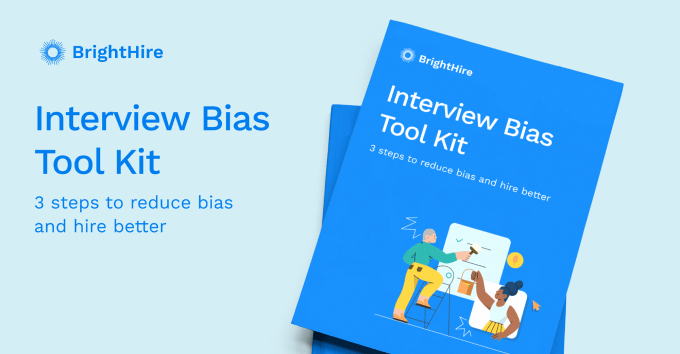For even the most forward-thinking organizations, hiring bias is an uncomfortable but necessary topic to address. All managers should acknowledge that bias can creep into the hiring process, undermine goals of equity and inclusion, and limit the breadth of your organization’s potential talent.
While biases can result from a hiring manager’s conscious or subconscious tendencies, bias is not just a “personal” problem to be confronted by individuals. It also leads to problems in hiring (and retention) at an institutional level. These risks are heightened when there are inconsistencies, oversights, and lack of structure in an organization’s processes.
While revising job descriptions and blinding resumes are great first steps, there is much more that can be done to confront and reduce biases in hiring. Proactive strategies can help give every candidate fair consideration, even when you’re under pressure to fill a role as soon as possible.
Below are some high-level approaches your team can take to add structure and reduce bias in your hiring process. For more detailed ideas, including handy checklists and downloadable templates, check out our Interview Bias Tool Kit.
Before interviews begin
- Acknowledge that bias is human: Part of confronting bias is understanding that everyone can be affected by it and act upon it (even if they don’t intend to). From the start, your team should openly address the possibility of bias and agree to counteract it in your process. With that elephant in the room addressed, you can more mindfully begin the interview process.
- Align on a Candidate Success Profile: Agree on the skills, knowledge, and potential for growth that someone in the role must have or be able to develop. Create a “map” for the role that will guide interview questions and keep the team aligned in its assessment of candidates (you can use our kit linked below to get started). Throughout this process, resist the urge to personify a “perfect” candidate – the best possible hire might look, sound, and act differently than the person you imagine.
- Develop an interview guide: Once the hiring team has established what to look for, collaborate to develop questions that probe those specific needs. Record these questions in an interview guide with clear wording and an established question order. While different rounds of interviews might involve different topics, the questions in each round should be asked consistently across candidates to ensure thoroughness and fairness. We have ideas to help you build an effective interview guide in our kit below.
Check out our Interview Bias Tool Kit to try these strategies with your team!
Other tactics to consider:
- Start with a phone screen: A quick, casual phone conversation can reduce the likelihood of biases that sometimes accompany more formal interviews (e.g. based on appearance, dress, video background, nervous behavior, etc.). Starting with a phone call helps keep the focus of this introductory conversation on the candidate’s interests and qualifications.
- Embrace live video interviews: The recent trend toward virtual meetings will likely continue, and virtual interviews are increasingly the default recruiting tool for many organizations. This can be beneficial – conducting live interviews virtually through a video platform like Zoom or Google Meet can help level the playing field for candidates who may not be able to take time off of another job or travel to your job site. (It can also save your organization money by avoiding reimbursement of candidate travel.)
As an additional benefit, video interviews make it possible to include an interview intelligence platform in your hiring process, which can help your team gather more data and make more objective decisions.
- Include a short test or exercise to see how candidates work: Administering a short work sample exercise can be an effective way to assess whether a candidate can grow to execute effectively in a role. For example, as we found in our recent State of Sales Hiring report, many organizations that employ sales account executives will ask job candidates to give a mock sales pitch or participate in a role-play exercise.
Work sample tests can be even more anonymized to further reduce bias. For example, asking a candidate to anonymously submit a short writing sample or memo can indicate how they might perform in a writing-intensive role.
During interviews
- Stick to the script: Every interviewer should reference the interview guide during the interview. Keep it close at hand and ask each question verbatim. In addition to the phrasing of the questions, it’s important that interviewers stick to the predetermined order of the questions. Maintaining this structure keeps things fair by encouraging teams to assess applicants consistently and without improvisation.
- Be personable without getting too personal: We are all predisposed to like others who seem similar to us. Try to limit the discussion of external information that is unrelated to the role, such as where a candidate grew up, where they went to school, or their current living situation.
- Recording is best, and taking notes is essential: Interview intelligence platforms make taking notes, highlighting answers, and sharing with colleagues intuitive by taking some of the work off of your plate while you speak with a candidate. With a recorded, annotated interview video, you can review exactly what happened (and comment on how you feel about it) with less bias. However, if you’re taking notes manually, keep as detailed of a record as possible rather than relying on memory. This will allow you to remember what each candidate said more clearly and less subjectively when you debrief later.
Immediately after each interview
- Don’t wait too long: Avoid the urge to fill in blanks after the fact. Even shortly after the interview ends, your memory can be susceptible to bias. You might become distracted by another task or meeting, or just feel tired from a long day of speaking with candidates. While it can be tempting to wait and gather your thoughts later, reviewing your notes and recording commentary sooner is preferable – it leaves less time for potential bias or gaps in memory to affect your recall from the interview.
- Keep a scorecard: As soon as possible after the interview is over, use your notes or interview recordings to complete a candidate scorecard according to a consistent rubric that is applied across each interview. The more you can measure and quantify a candidate’s performance, the easier (and more equitable) it will be to compare candidates later on. Our downloadable kit has an example template for a scorecard your team can use.
Take a look at our Interview Bias Tool Kit to implement these ideas on your own team!
Debriefing with colleagues
- Make it official: Once everyone has interviewed the candidate(s), set aside dedicated time to compare your notes and discuss your observations in a formal meeting.
- Deep dive on discrepancies: Differences of opinion are important to parse in these conversations. Ask yourself why your perception of the candidate in a certain area might have been stronger or weaker than your colleague’s. Open discussion of these discrepancies is another chance to mitigate potential biases. For more ideas on how to structure candidate debrief discussions, see our downloadable kit below.
- Seek other perspectives: Multiple minds are always better than one when reviewing an interview performance, especially if stakeholders were not able to participate in every conversation. An interview intelligence platform can make the debrief process more thorough and objective, allowing your team to record, bookmark, and re-watch parts of interviews so they can be discussed later.
Ready to build a better interview process? Check out our Interview Bias Tool Kit to get started.









